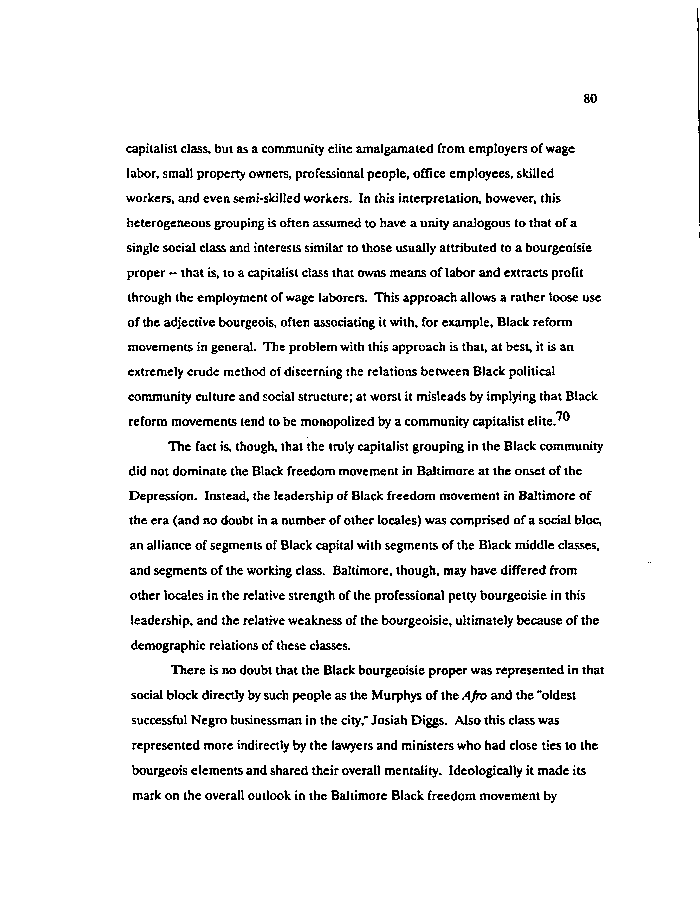|
80
capitalist class, but as a community elite amalgamated from employers of wage
labor, small property owners, professional people, office employees, skilled
workers, and even semi-skilled workers. In this interpretation, however, this
heterogeneous grouping is often assumed to have a unity analogous to that of a
single social class and interests similar to those usually attributed to a bourgeoisie
proper ~ that is, to a capitalist class that owns means of labor and extracts profit
through the employment of wage laborers. This approach allows a rather loose use
of the adjective bourgeois, often associating it with, for example, Black reform
movements in general. The problem with this approach is that, at best, it is an
extremely crude method of discerning the relations between Black political
community culture and social structure; at worst it misleads by implying that Black
reform movements tend to be monopolized by a community capitalist elite.70
The fact is, though, that the truly capitalist grouping in the Black community
did not dominate the Black freedom movement in Baltimore at the onset of the
Depression. Instead, the leadership of Black freedom movement in Baltimore of
the era (and no doubt in a number of other locales) was comprised of a social bloc,
an alliance of segments of Black capital with segments of the Black middle classes,
and segments of the working class. Baltimore, though, may have differed from
other locales in the relative strength of the professional petty bourgeoisie in this
leadership, and the relative weakness of the bourgeoisie, ultimately because of the
demographic relations of these classes.
There is no doubt that the Black bourgeoisie proper was represented in that
social block directly by such people as the Murphys of the Afro and the "oldest
successful Negro businessman in the city," Josiah Diggs. Also this class was
represented more indirectly by the lawyers and ministers who had close ties to the
bourgeois elements and shared their overall mentality. Ideologically it made its
mark on the overall outlook in the Baltimore Black freedom movement by
|

